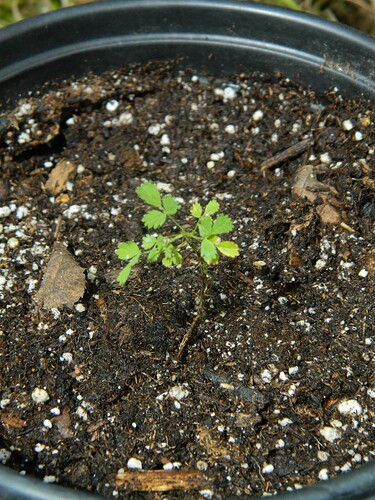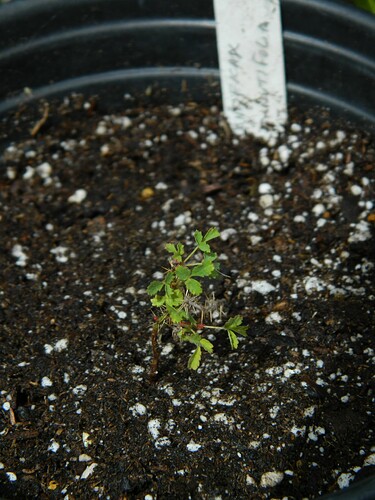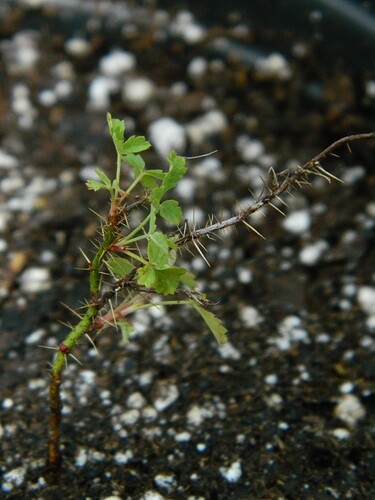I have played with Stellata mirifica and Minutifolia for many years. It appears I have finally succeeded in combining the two. The stigma disk is deep in the Mirifca ovary. I’ve attempted pollinating it using my finger with no success, so this year, I employed the small paint brush technique. Remembering Ralph Moore’s statements about his wondering if some of his wilder crosses never succeeded may have been due to using too little pollen, I DROWNED several Mirifica blooms in Minutifolia pollen. Not simply dried anthers, but actual, literal pollen. Because the Mexican form of Minutifolia is the one which reliably sets hips and appears to be the form which has resulted in producing my Minutifolia hybrids with modern minis, I concentrated on using a mixture of pollen from Pure Bea, the white Mexican form and the UC Berkeley Mexican form selection. Fortunately, both species continue flowering for me as long as they are provided water, so I can continue attempting the cross as long as I desire. It seems to have finally worked! Pure Bea is out of flower at this moment, but the Berkeley selection is flowering.
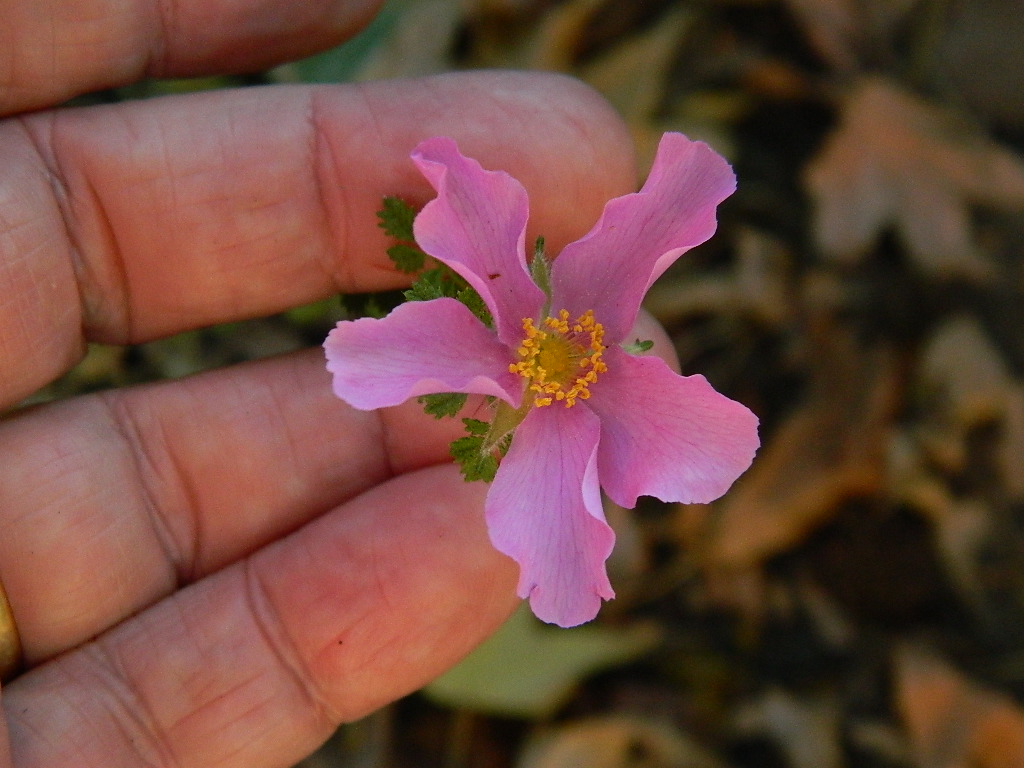
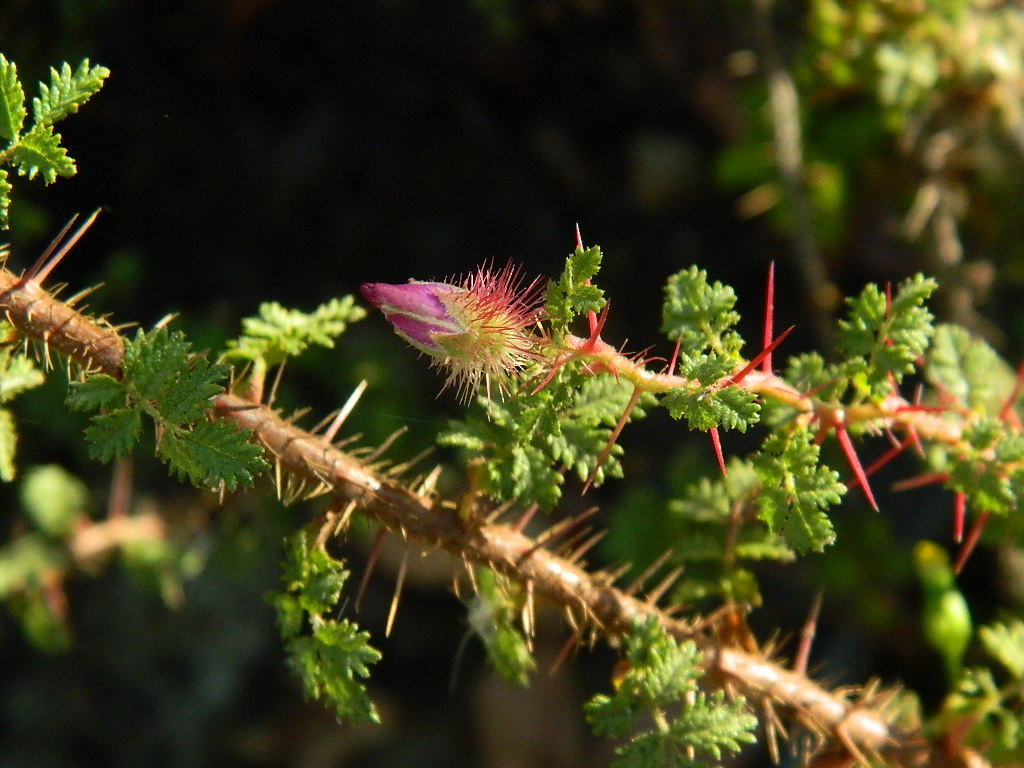
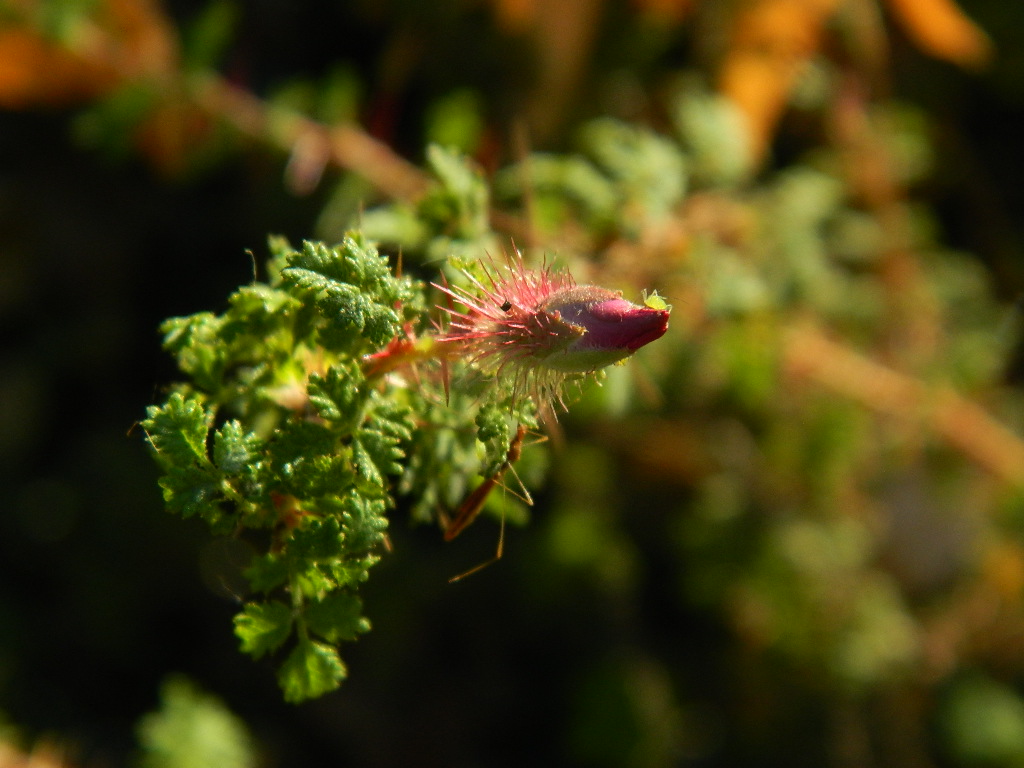
This is Stellata mirifica with hips bursting full of seeds resulting from Minutifolia pollen. Mirifica hasn’t set many self set hips for me. The only other time I obtained self set seed from it which resulted in actual seedlings was the one year in Encino where the one surviving seedling is now named Puzzlement. 'Puzzlement' Rose The only neighboring rose to it was Fedtschenkoana, and the physical traits of the rose appear to support that presumption. I’m eager to grow these seeds! I discovered that Minutifolia self seedlings are highly susceptible to mildew. All of the earlier Minutifolia self seedlings I’ve raised have died from the fungus. Perhaps I should break down and use a safe fungicide on these to help prevent their loss? The hairs on the seeds seem as if they are meant to stick to animal fur for distribution. A really odd characteristic of Mirifica is the stench of the hip interior. It smells like Valerian Root, nearly “old, stinky sneaker”. The hips are bursting with seeds!
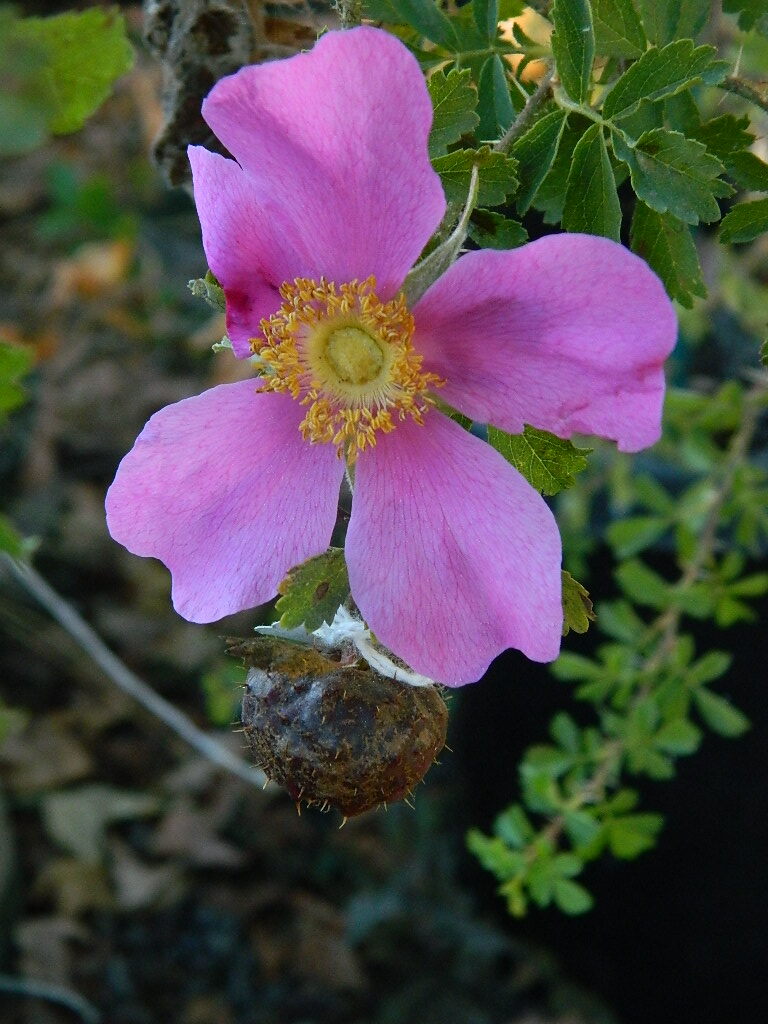
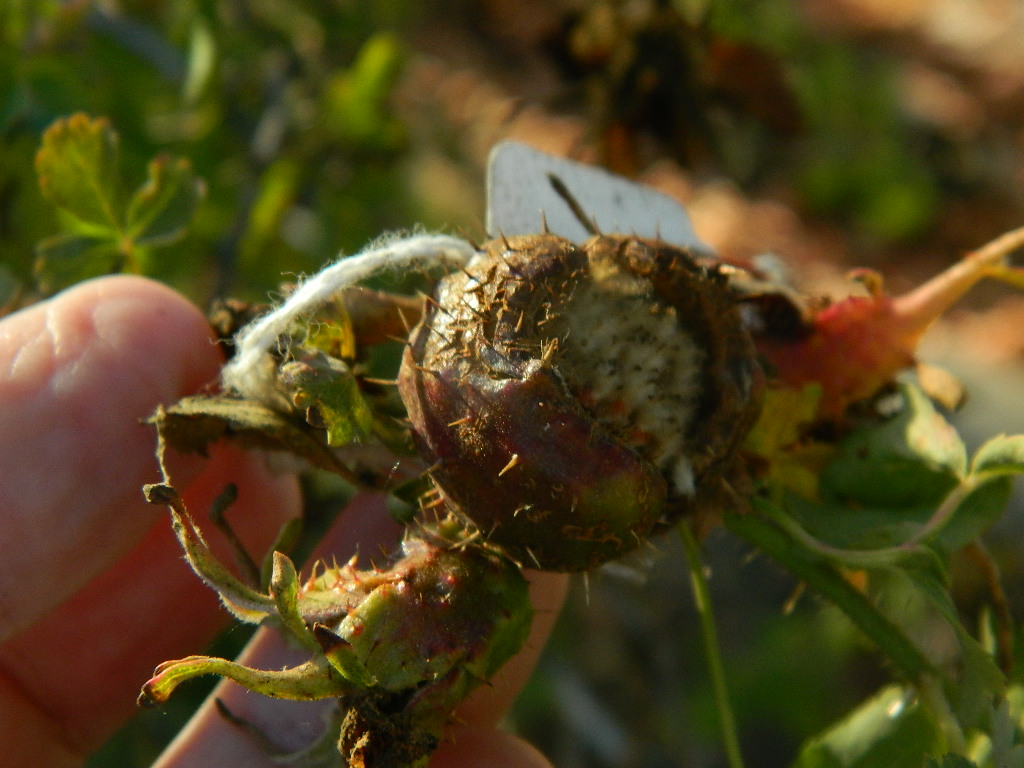
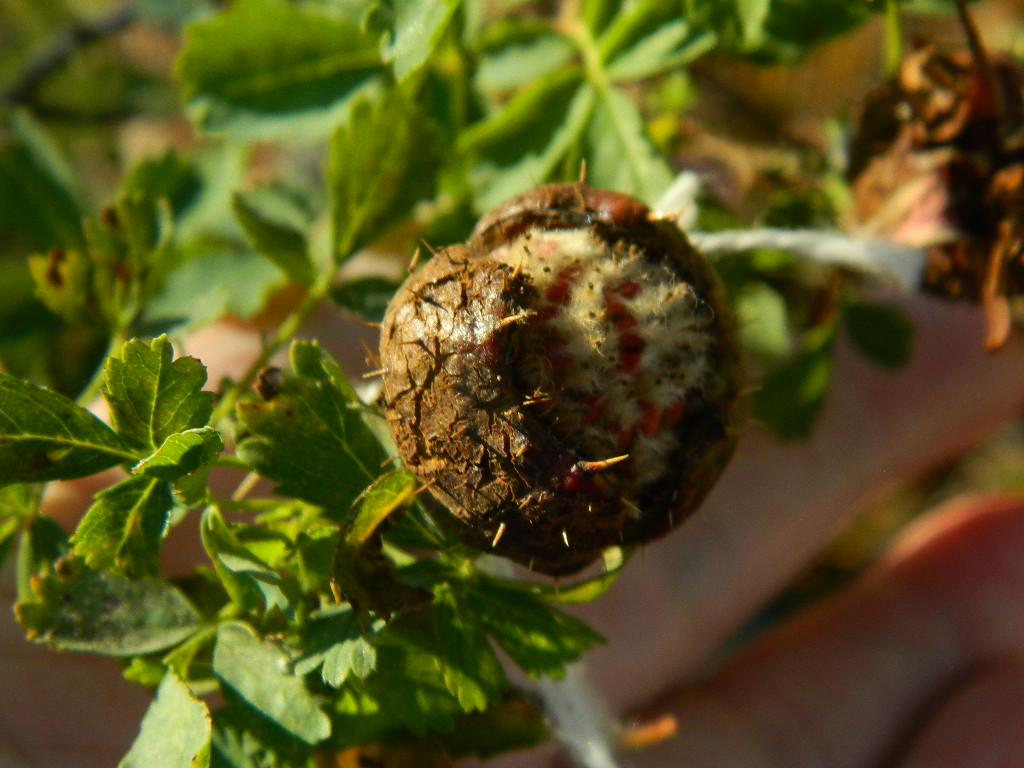

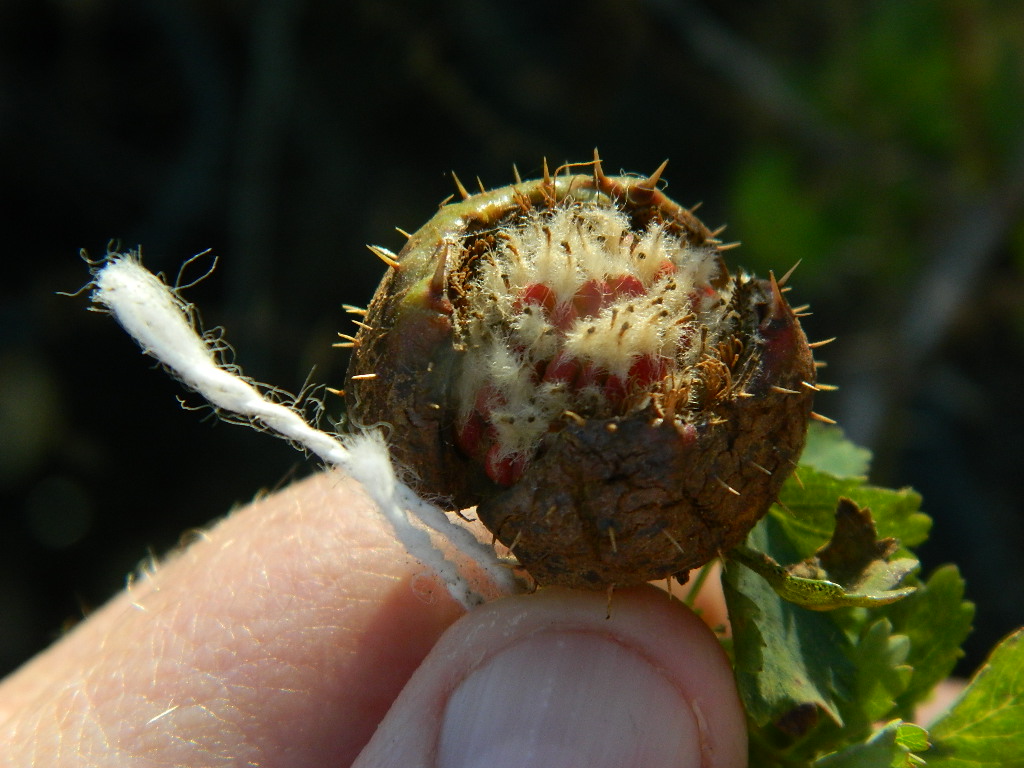
I saw your pics on HMF this morning.
My first thought: “omg its so fuzzzzzzzy~” lol
I think one of the genetic potentials of roses like this, as well as a few others, is that their internodes are very dense, even compared to Rosa wichurana, which could translate well into moderns. Another genetic potential is the expenditure of genetic material for growing ranges. There is partial overlap for cold hardiness in roses with heat tolerance. This is because they tend to share polygenetic overlap with stress tolerance.
Very interesting. Very, very rare,do whatever it takes to keep them alive.
Thank you. That’s my intention. I hope to be able to use the results from these seedlings with the L56Min2 and L56Puzzle lines. Who knows where they may lead? Thankfully, it’s the journey that provides the fun!
Hi @roseseek,
I just found this thread because I was curious about stellata hybrids This french page says that Louis Lens had managed to produce some but these don’t seem to be on HMF.
http://www.botarosa.org/botarosa/roses/classer/sg-hesperho.htm
How has your experiment with them been going?
SeasideRooftop, if you’d like to see more of roseseek’s (Kim’s) work, look through his blog here: http://pushingtheroseenvelope.blogspot.com/
Mark
Thank you, Mark! Mr. Lens did release Pink Mystery, which he sent me in a group of “thank you” plants for the literal garbage bags full of material I sent him via a friend whose father was an American Airlines pilot so she could fly anywhere in the world for only the taxes on the ticket as long as her mother lived. Her son and his family (read GRAND CHILDREN) lived in Belgium and she never met anyone whom she wanted to know, and didn’t. Each time she visited her grand kids, she brought a garbage bag full of cuttings (including Stellata stellata, Stellata mirifica and Minutifolia) to Mr. Lens. They became such friends, Mr. Lens named “Twins” to commemorate the birth of her grand children and “Sharon’s Love” for her. Back to Pink Mystery… I grew it here for some years and LOVED it. I shared it with any and everyone who would accept it and it appears to have died out in the US. I nearly died out in Europe until rose friends there urged the Lens Nursery to reclaim pieces of it from a private garden to add back to the catalog. I wish we could get it back into the US as it is a marvelous thing. I do miss it. Currently, I am battling the Stellata mirifica X Minutifolia seedlings, trying to convince them they like this climate and want to keep developing. The parents succeed here and flower much of the spring through fall, sometimes into “winter” but the seedlings are not yet convinced. 'Pink Mystery' Rose
Thank you for the link, mwesson!
Roseseek your blog is fantastic! And thank you for that story, and for the reference to Pink Mystery. I will try and get one in the fall to see how it does down here.
I hope your seedlings will eventually grow and thrive!
Thank you @SeasideRooftop! I’m glad you’re enjoying it. And, I hope you are able to obtain a Pink Mystery. It’s really quite an interesting and nice rose. It honestly seems a bit “prehistoric” in appearance. Thanks, also, for the good wishes for the seedlings. My fingers are definitely crossed, also!
Two of the Stellata mirifica X Minutifolia seeds germinated and have made it in to their second year. Because it is supposed to rain, I lifted them from the seedling table and potted them individually into their own gallon cans. One nearly died last year, as you can see from the dead area of the original main cane. Who knows when they’ll flower? What size plants will they mature into? Will there be F1 hybrid vigor (SCARY thought!)? What shade of mauvy pink will the flowers be (as if there was much chance of any other color)?
#1
#2
